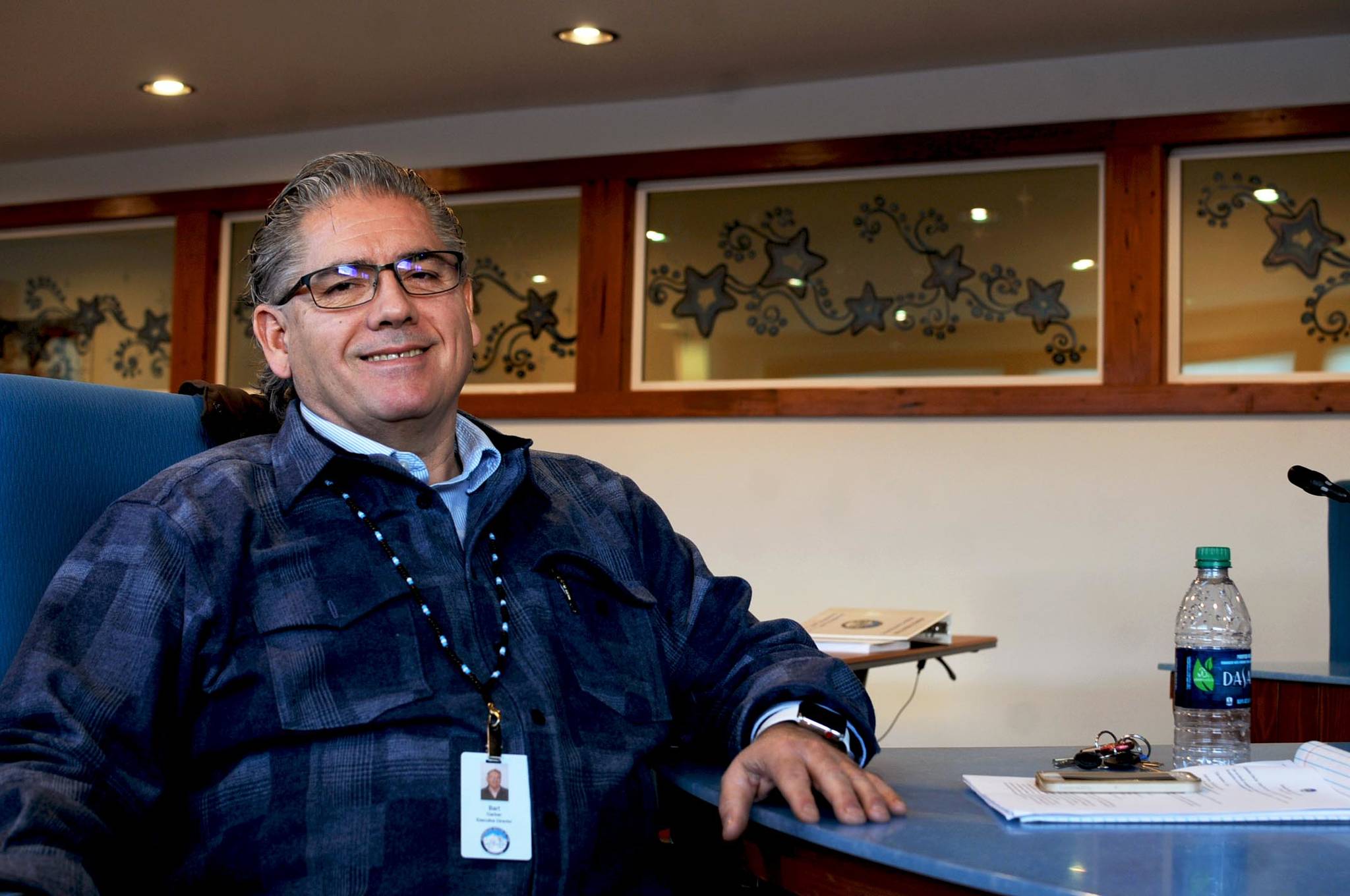Although it’s a new office and staff, taking the job as the Kenaitze Indian Tribe’s CEO is in some ways a homecoming for Bart Garber.
Garber took over at the tribe last fall, filling a position vacant since former executive director Jaylene Petersen-Nyren resigned in June. Raised in Tyonek and Anchorage, he traces his family history back to the Kenaitze on the Kenai Peninsula before his family moved to the west side.
“The Kenaitze have been around forever,” he said. “My grandmother was actually born here. She’s culturally Kenaitze, as is my great-grandfather.”
An attorney by training, Garber has spent most of his career working on issues related to Native American law or with Alaska Native corporations. He’s worked with the Native American Rights Fund, a nonprofit law firm that advocates for Native American rights nationally and taught law at the University of Alaska Fairbanks.
This isn’t his first foray in leading an Alaska Native organization. He spent two decades at the helm of the Tyonek Native Corporation, the corporate arm for the village on the west side of Cook Inlet across from Nikiski. From there, he went to the Interior to run the Toghottehele Corporation, the village corporation for the village of Nenana, and worked with other village corporations in the Interior on economic development ventures.
When his contract ended at Toghottehele, he intended to go back to working as a consultant before hearing the position at Kenaitze was open. After meeting with some friends who work in other Cook Inlet basin Alaska Native organizations, he decided to apply.
“I was a little reluctant to come back into what can be a real political scene at the village level. … It had been about nine months or so, and I missed the camaraderie of other professionals around me. Being a consultant for large international companies, Russians or Koreans or Africans, you don’t get the contact with people that often. You’re engaging and taking on work, engaging and taking on work, but you don’t have that day-in, day-out (contact). So I thought, ‘Maybe I would like to do that.’”
Kenaitze is a slight change of direction. The tribal government has an economic development arm but is more social service-oriented, with the largest part of its business invested in health care and other social services, like education and housing. The other Alaska Native corporations Garber has worked for are the same kind of government entity, though, he said.
The Kenaitze Tribe has launched several large initiatives in recent years. The tribe completed construction of its Dena’ina Wellness Center, a sprawling health facility in Old Town Kenai, in 2014, and celebrated the launch of its joint jurisdiction wellness court in December 2016. Most recently, the tribe was among 18 Alaska Native organizations that signed an agreement with the state of Alaska to provide child welfare services that have previously been provided by the state.
Though Alaska Native tribes and tribal organizations technically have sovereignty, they have to work with the other governments around them, Garber said. Adding additional staff will help the tribal government with initiatives to exercise its sovereignty, he said.
“No sovereign is on its own,” he said. “It always fits within a system. Tribal governments do as well.”
In recent years, the tribe’s resources have been largely focused on its health care business rather than on administration and government. Garber said he plans to shift some of that effort back the other way, starting with hiring additional staff to support operations, such as a staff attorney. In the future, he envisions Kenaitze being actively involved in public discourse and governance issues, he said.
There are opportunities for Kenaitze to act as a coordinator for some community needs, too, he said. He cited the ongoing homelessness issue in the central Kenai Peninsula as an example. Multiple public agencies and nonprofits are working on solutions to the problem, but Kenaitze could help network together all the efforts, he said. The city of Fairbanks recently hired a Housing and Homeless Coordinator on staff, and the Tanana Chiefs Conference recently dedicated a sobering center to help people in Fairbanks sleep off the effects of drugs or alcohol. Those are things the Kenaitze Indian Tribe could provide, he said.
“I really want Kenaitze to be a participant and a contributor and an opinion leader in this community rather than just a reactor, which sometimes tribes fall into,” he said. “We have resources, we have capabilities, and we have a joint interest with the local cities, the borough and the state. We’re already doing that with the state. I hope to get more formal relationships nailed down with the borough and the cities and other agencies.”
For now, he said he’s focusing on analyzing what’s going on at the tribe, building a strategic plan with the tribal council and meeting with administration and staff members. He said he didn’t foresee diminishing medical services currently being provided but that it was important the tribe’s operations benefit its approximately 1,600 members and be sustainable. Health care continues to grow, so it’s a beneficial business to be part of, he said.
Overall, he said he was excited to be with the tribe and to get the chance to interact with the public as part of his job.
“One of the main things my job calls for is engagement,” he said.
Reach Elizabeth Earl at elizabeth.earl@peninsulaclarion.com.

